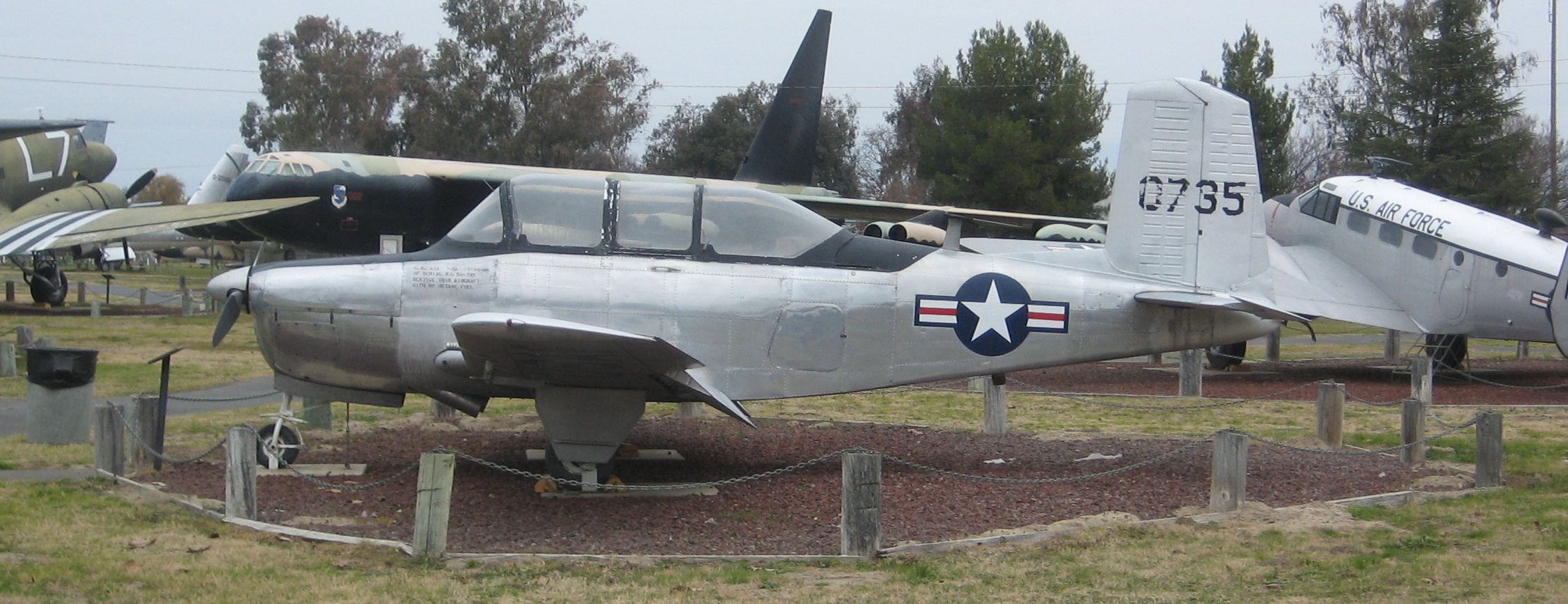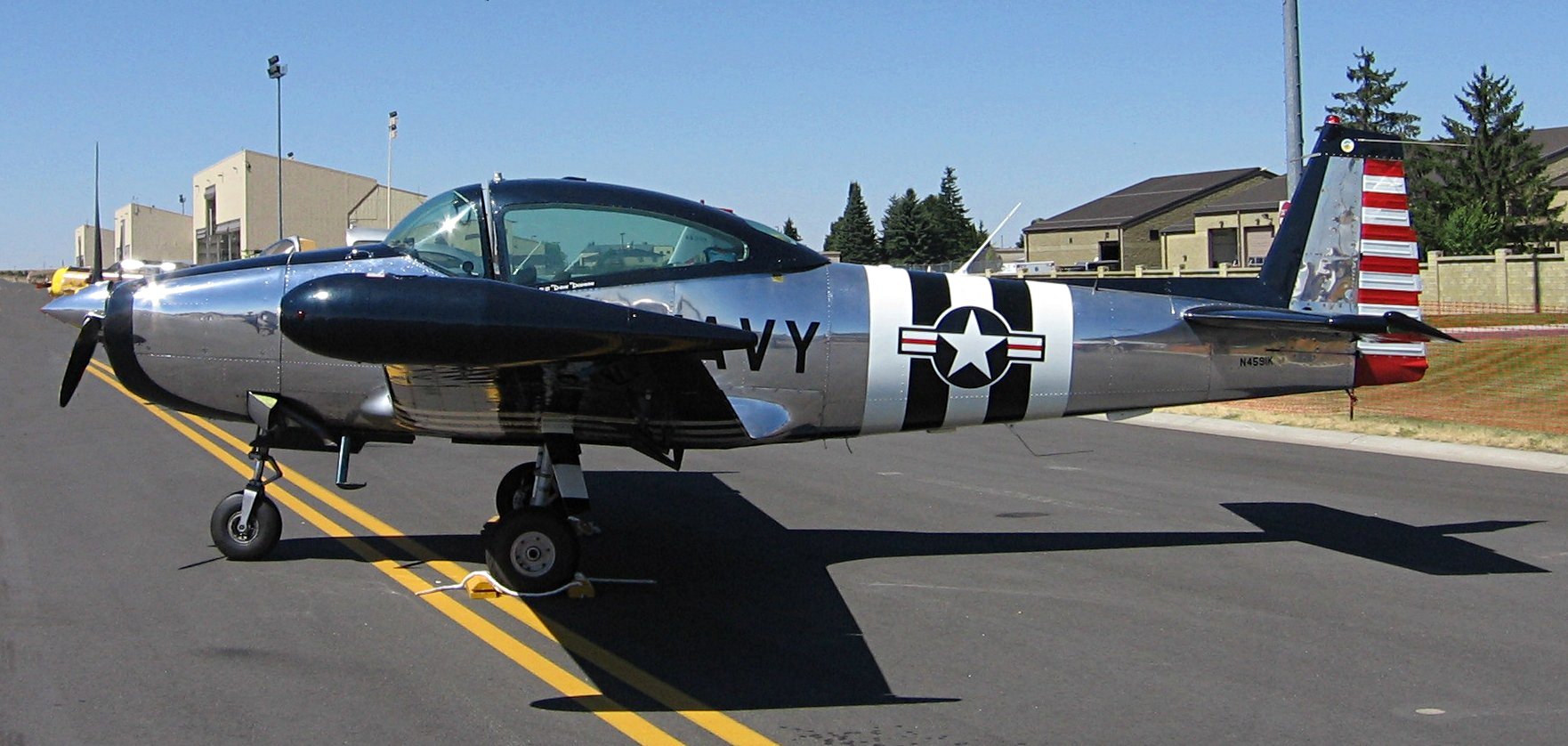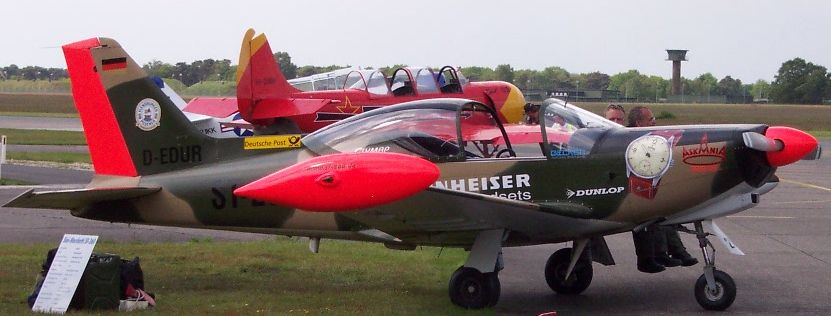|
Continental O-470
The Continental O-470 engine is a family of carbureted and fuel-injected six-cylinder, horizontally opposed, air-cooled aircraft engines that was developed especially for use in light aircraft by Continental Motors. Engines designated "IO" are fuel-injected. The family also includes the E165, E185, E225 and the E260 engines, and several specialty variants. It has been in production since 1950. Design and development The first engine in this series was the E165, a 471 cubic inch (7.7 L) engine producing , and was the first of the Continental's "E" series engines. Later versions were given the company designation of E185 ( continuous) and E225 (). When the US military gave them all the designation of O-470 the company adopted the designation and future models were known as Continental O-470s. The O-470 family of engines covers a range from to . The engines were developed in the late 1940s and certification was applied for on 23 October 1950 on the regulatory basis of Part ... [...More Info...] [...Related Items...] OR: [Wikipedia] [Google] [Baidu] |
WikiProject Aircraft
A WikiProject, or Wikiproject, is a Wikimedia movement affinity group for contributors with shared goals. WikiProjects are prevalent within the largest wiki, Wikipedia, and exist to varying degrees within Wikimedia project, sister projects such as Wiktionary, Wikiquote, Wikidata, and Wikisource. They also exist in different languages, and translation of articles is a form of their collaboration. During the COVID-19 pandemic, CBS News noted the role of Wikipedia's WikiProject Medicine in maintaining the accuracy of articles related to the disease. Another WikiProject that has drawn attention is WikiProject Women Scientists, which was profiled by ''Smithsonian Magazine, Smithsonian'' for its efforts to improve coverage of women scientists which the profile noted had "helped increase the number of female scientists on Wikipedia from around 1,600 to over 5,000". On Wikipedia Some Wikipedia WikiProjects are substantial enough to engage in cooperative activities with outside organization ... [...More Info...] [...Related Items...] OR: [Wikipedia] [Google] [Baidu] |
Flat Six Engine
A flat-six engine, also known as a horizontally opposed-six, is a six-cylinder piston engine with three cylinders on each side of a central crankshaft. The most common type of flat-six engine is the boxer-six engine, where each pair of opposed cylinders moves inwards and outwards at the same time. The advantages of the flat-six layout are good engine balance (for reduced vibration), a low center of gravity, short length (compared with an inline-six engine) and being well suited to air-cooling. The disadvantages are a large width (which can limit the maximum steering angle when used in a front-engined car), a large intake manifold being required when a central carburetor is used, and duplication of the inlet and outlet connections for water-cooled engines. The first production flat-six engine was in the 1904 ''Wilson-Pilcher 18/24 HP'' car. The most notable use of flat-six engines is the Porsche 911 sports car, which has used flat-six engines continuously since 1963. Several othe ... [...More Info...] [...Related Items...] OR: [Wikipedia] [Google] [Baidu] |
Robertson SRX-1 Skyshark
The Robertson Skylark SRX-1 is a five place high performance STOL aircraft designed in the 1950s. It was intended to be operated out of landing strips with cruise speeds. Design The aircraft was designed by James L. Robertson, son of William B. Robertson, Robertson Aircraft Corporation founder at the age of 27. The aircraft is designed to be stall-proof and spin-proof and is capable of a minimum flight speed. It was also the first light aircraft in America to be designed to accommodate a turboprop engine. The Skylark is all metal, with a steel tube internal structure. It incorporates shrouds, flaps, spoilerons, turbulator control, stabilators, elevators, and spinner duct cooling. Operational history Test flights were performed by aerobatic pilot Marion Cole Marion Cole (1924–2011) was an American Aerobatic pilot. Early life Cole was a flight instructor for the United States Navy in World War II. Cole performed from 1947-1957 as part of the Cole Brothers Air ... [...More Info...] [...Related Items...] OR: [Wikipedia] [Google] [Baidu] |
Fletcher FL-23
__NOTOC__ The Fletcher FL-23 was an American two-seat liaison or observation aircraft designed and built by the California-based Fletcher Aviation Corporation. It was entered into a competition and lost against the Cessna 305A as a liaison or observation aircraft for the United States Army The United States Army (USA) is the land service branch of the United States Armed Forces. It is one of the eight U.S. uniformed services, and is designated as the Army of the United States in the U.S. Constitution.Article II, section 2, .... Development The FL-23 prototype was designed and built as a private venture, it was a high-wing cantilever monoplane with an all-moving tailplane mounted at the top of the fin. It had a fixed tricycle landing gear and powered a 225-hp (168 kW) Continental E225 piston engine. It had room for a pilot and observer in tandem; the observer had an unusual acrylic plastic enclosure to give an all-round visibility. Operational history The US Ar ... [...More Info...] [...Related Items...] OR: [Wikipedia] [Google] [Baidu] |
Fletcher FD-25
The Fletcher FD-25 Defender was a light ground-attack aircraft developed in the United States in the early 1950s. Design and development Designed by John Thorp, the Defender was a conventional low-wing cantilever monoplane with fixed tailwheel undercarriage. Provision was made for two machine guns in the wings, plus disposable stores carried on underwing pylons. Construction throughout was all-metal, and the pilot sat under a wide perspex canopy. Operational history Three prototypes were built, two single-seaters and a two-seater, but no orders were placed by the US military. In Japan, however, Toyo acquired the rights to the design, and built around a dozen aircraft, selling seven (five single-seater attack versions and two two-seat trainers) to Cambodia,Grandolini 1988, p. 39. and four to Vietnam. One example (FD-25B JA3051) served with the Royal Thai Police. Survivors One example (FD-25B N240D) remains in an airworthy condition today and appeared at the EAA AirVenture Oshk ... [...More Info...] [...Related Items...] OR: [Wikipedia] [Google] [Baidu] |
Beechcraft T-34 Mentor
The Beechcraft T-34 Mentor is an American propeller-driven, single-engined, military trainer aircraft derived from the Beechcraft Model 35 Bonanza. The earlier versions of the T-34, dating from around the late 1940s to the 1950s, were piston-engined. These were eventually succeeded by the upgraded T-34C Turbo-Mentor, powered by a turboprop engine. The T-34 remains in service more than seven decades after it was first designed. Design and development The T-34 was the brainchild of Walter Beech, who developed it as the Beechcraft Model 45 private venture at a time when there was no defense budget for a new trainer model. Beech hoped to sell it as an economical alternative to the North American T-6/SNJ Texan, then in use by all services of the U.S. military. Three initial design concepts were developed for the Model 45, including one with the Bonanza's signature V-tail, but the final design that emerged in 1948 incorporated conventional tail control surfaces for the benef ... [...More Info...] [...Related Items...] OR: [Wikipedia] [Google] [Baidu] |
Ryan Navion
The Ryan (originally North American) Navion is a single-engine, unpressurized, retractable gear, four-seat aircraft originally designed and built by North American Aviation in the 1940s. It was later built by Ryan Aeronautical Company and the Tubular Steel Corporation (TUSCO). The Navion was envisioned as an aircraft that would perfectly match the expected postwar boom in civilian aviation, since it was designed along the general lines of, and by the same company which produced the North American P-51 Mustang. Design and development The Navion was originally designed at the end of World War II by North American Aviation as the NA-143 (but produced under the NA-145 designation).Taylor, Michael, J.H., ed. ''Jane's Encyclopedia of Aviation''. Danbury, Connecticut: Grolier Educational Corporation, 1980. p. 929. North American built 1,109 Navions in 1946–47, initially selling them at a below cost US$3,995, which later increased to $6,100,Garrison ''Flying'' May 1973, p. 45. ... [...More Info...] [...Related Items...] OR: [Wikipedia] [Google] [Baidu] |
Muniz Casmuniz 52
The Casmuniz 52 was a twin-engine light transport aircraft. It was the first all-metal aircraft built in Brazil, only the prototype was built. Design and development The plane began to be designed by Willibald Weber in 1951, an Austrian pilot and aeronautical engineer born in Wiener Neustadt in 1925, and where work for Messerschmitt until 1944. In 1949, he moved to Brazil, and worked for Cássio Muniz S/A. He was based on the Aero 45, which he had already maintained and designed a five-seat twin-engined cabin monoplane which was first flown in April 1952. A low-wing cantilever monoplane with a 185 hp (138 kW) Continental E185 flat six engines mounted on the leading edge of wing. It had a tailwheel landing gear. Operational history It was registered with the prefix “PP-ZPD” and taken for airworthiness tests at Campo de Marte, which lasted from the late-1953 to the beginning of 1954. After accumulating 200 flight hours, the aircraft was sent to the Department of A ... [...More Info...] [...Related Items...] OR: [Wikipedia] [Google] [Baidu] |
Macchi M
Aermacchi was an Italian aircraft manufacturer. Formerly known as Aeronautica Macchi, the company was founded in 1912 by Giulio Macchi at Varese in north-western Lombardy as Nieuport-Macchi, to build Nieuport monoplanes under licence for the Italian military. With a factory located on the shores of Lake Varese, the firm originally manufactured a series of Nieuport designs, as well as seaplanes. After World War II, the company began producing motorcycles as a way to fill the post-war need for cheap, efficient transportation. The company later specialised in civil and military pilot training aircraft. In July 2003, Aermacchi was integrated into the Finmeccanica Group (now Leonardo) as Alenia Aermacchi, which increased its shareholding to 99%. Military trainers Since the beginning, the design and production of military trainers have been the core business of Alenia Aermacchi. The products include: * SF-260, piston-engined or turboprop-powered screener/primary traine ... [...More Info...] [...Related Items...] OR: [Wikipedia] [Google] [Baidu] |
Luscombe 11
The Luscombe 11 Sedan is a civil utility aircraft produced in the United States in the late 1940s. Design and development In 1946 Luscombe introduced the four-place model 11, designed to specifications produced by the Flying Farmers of America. This was designed as a combined family/business aircraft, capable of carrying four people. With the back seat removed, up to six milk cans could be carried. Eventually, the Flying Farmer market proved to be a myth, so the Model 11 Sedan was finished with a more upmarket interior to appeal to the businessman. Certification was accomplished in May 1948. 38 examples remained on the U.S. civil aircraft register in August 2010. The model 11A was reworked into the model 11E by engineers at the Luscombe Aircraft Corporation (later renamed to Quartz Mountain Aerospace after learning that the Don Luscombe Aviation History Foundation had trademarked the Luscombe name). The 11E model features tricycle landing gear and an Continental IO-360. Quartz ... [...More Info...] [...Related Items...] OR: [Wikipedia] [Google] [Baidu] |
Boisavia Mercurey
The Boisavia B.60 Mercurey was a series of four-seat light aircraft developed in France shortly after World War II. Design and operations The Mercurey was a conventional high-wing braced monoplane with fixed tailwheel undercarriage. It was built in small numbers and found use in the normal general aviation roles of tourer, trainer, agricultural aircraft, and glider tug. Variants ;B.60 Mercurey:3 prototypes powered by Renault 4Pei engine ;B.601 Mercurey:Powered by a Avco Lycoming O-435-1 engine;three built. ;B.601L Mercurey:Main production version, equipped with an Avco Lycoming O-360-A engine;twenty-seven built. ;B.602 Mercurey:Powered by a Continental E165-4 engine;two built. ;B.602A:1x Continental O-470-11 ;B.603 Mercurey Special:Glider tug version, powered by a Salmson 8 As engine (Argus As 10);five built. ;B.604 Mercurey II:Dedicated glider tug with lengthened fuselage, powered by a Salmson 9ABc Between 1920 and 1951 the Société des Moteurs Salmson in Fran ... [...More Info...] [...Related Items...] OR: [Wikipedia] [Google] [Baidu] |







